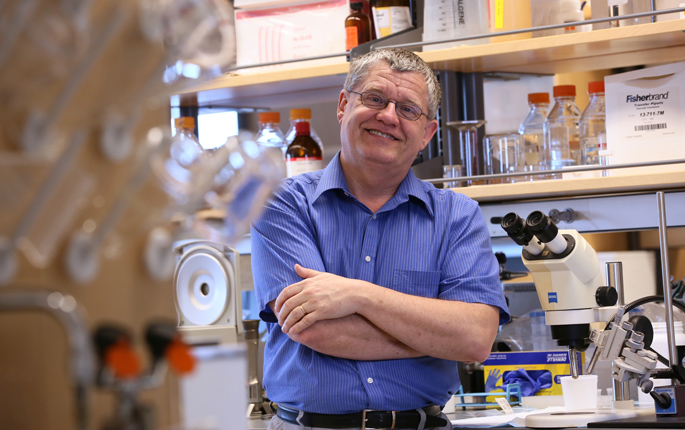Some major prospective drug repurposing opportunities form the backdrop to new research reported Oct. 28 in Science Advances. A team at Case Western Reserve University and Vanderbilt University Medical Center has determined with atomic-level precision how two established drugs bind to and alter the conformation of a cell membrane transporter protein called NKCC1, shutting down its activity.

“The more we can understand about the inhibitory action of these drugs on NKCC1, the closer we can get to developing new drugs or new formulations that will be more likely to reach NKCC1 as its expressed in the central nervous system, with the hope of aiding the correction of some devastating neurological problems,” said one of the leaders of the study, VUMC cell physiologist Eric Delpire, PhD, professor of Anesthesiology and Molecular Physiology and Biophysics.
Called loop diuretics, these two similar drugs, bumetanide and furosemide, are widely used to treat high blood pressure and swelling stemming from heart, liver or kidney disease. (In 2020, some 27 million prescriptions were written for furosemide in the United States, and another 1.4 million were written for bumetanide.) As diuretics, the drugs work by inhibiting a transporter expressed only in part of the kidney, NKCC2, which is closely related to NKCC1. It turns out that in therapeutic doses these drugs tend to be blocked from reaching NKCC1, but in the lab they are known to inhibit it.
And it happens that NKCC1 has of late emerged as a possible drug target for a range of neurological problems.
Apparently somehow due to its interaction with NKCC1, bumetanide is now under various phases of study for treatment of Alzheimer’s disease, neonatal seizures and autism spectrum disorder.
Figures included in the new report illustrate in exquisite detail how, in the lab, human NKCC1 assumes three bound conformations, two for furosemide and one for bumetanide, each causing the protein to close up shop entirely.
Delpire is an authority on these types of transporters, secondary to his more general research interest in cell volume regulation and transport of ions across cell membranes. NKCC1, unlike NKCC2, is expressed not only in the nervous system but in tissues throughout much of the human body, where it’s involved in regulation of cell volume, transporting chloride into cells together with sodium and potassium ions.
“What was most surprising to me from our study is the location we’ve established for the binding sites. If you’d asked me before which part of NKCC1 these drugs bind to, my answer for both would have been wrong,” Delpire said. He would have assumed that the drugs would bind to the core of the protein at the membrane. While one of the drugs, bumetanide, has a binding site in that part, the binding site common to both drugs is in the part of the transporter that extends inside the cell.
Placing samples from healthy humans at low temperatures, researchers at Case Western used a technique called cryogenic electron microscopy, or cryo-EM, to gather snapshots of NKCC1 in its natural unbound state and when separately bound by the two drugs.
In the mouse version of NKCC1 isolated in the lab, based on the cryo-EM findings, Delpire introduced mutations targeted to the binding site common to the two drugs. This small area of the mouse protein is identical in makeup to the human binding site. The mutations introduced by Delpire turned off the drug interaction, confirming the precise location of the binding site.
Delpire led the study with Case Western pharmacologist Edward Yu, PhD. The first authors are Mitchell Moseng, PhD, and Chih-Chia Su, PhD, also at Case Western. On the study also from VUMC is Kerri Rios.
The research was supported by the National Institutes of Health (grants AI145069, DK093501).















